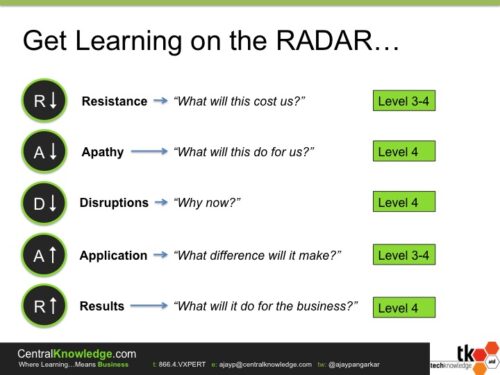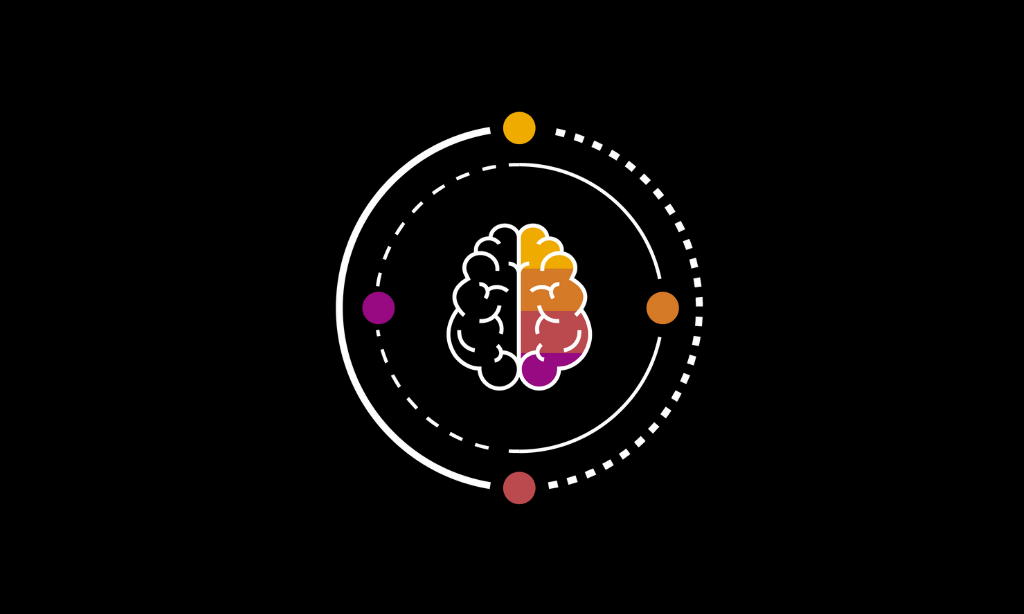Get Training on Your Leadership’s RADAR!
In today’s L&D Talk cohost Ajay Pangarkar (@bizlearningdude) shared the acronym RADAR. It’s a fantastic set of questions that you either need to ask, or be prepared to answer when talking to executives, or other stakeholders in the enterprise. It can also be a good reminder before we start any project.
- R = Decrease Resistance – What will this cost us?
- A = Decrease Apathy – What will this do for us?
- D = Decrease Disruption – What now?
- A = Increase Application – What difference will it make?
- R = Increase Results – What will it do for the business?
Resistance

Apathy
Training is not rocket science. Yet, as professionals, we take it just as seriously as a rocket scientist takes her field of study. Business executives view training as a cost center, an expense. And reducing costs is the name of the game. So you should expect apathy from business partners. Learning is often valued highly while training is not. If you are requesting $100k, you need to go into the conversation knowing that exec would rather use it to make sales.
Disruption
How is your request going to disrupt the business? We’re not talking about being a disruptive innovator in the training solutions you provide. All training is event based. That means a block of time must be devoted to focusing on the training. And that means attention is taken aware from getting work done. You must be ready to present your case in terms of how your solution will disrupt the business. Nobody ever tells you during instructional design school how to factor that into your solutions. You must be able to articulate how the disruption to the business will positively impact the business when its over.
Application
Being connected to key performance indicators is a hot topic. The legacy of the training department is to measure its success by counting attendance. This does not tell you anything important regarding your impact on the business. Will your solution that costs money, disrupts the business, and require resources, impact the future performance of employees in a positive way? You must tell a compelling story that speaks to the transfer of knowledge into action on the job.
Results
“Hard work is good, but results are better”. Building trust is not easy. Especially when you are being watched with skeptical eyes. So showing he results of your training solutions is going to be critical. Your results are what will reduce future resistance and apathy towards your work as a training professional.
Watch this week’s BizOps Wednesday with Brent Schlenker and Ajay Pangarkar to get more insights into RADAR. Be aware that we don’t start talking about RADAR until about 7 minutes into the conversation. So use this link if you’d like to skip the beginning.





